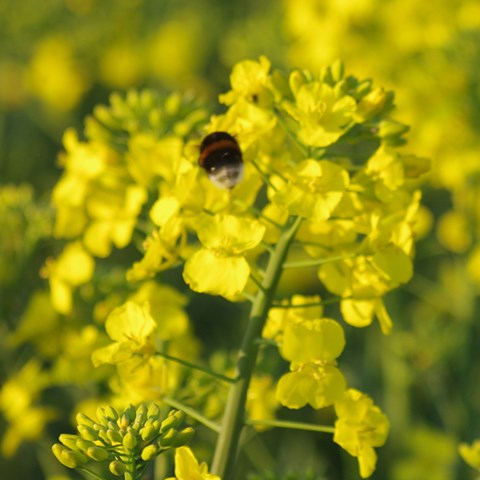Contact
Riccardo Bommarco, Professor
Department of Ecology, SLU
riccardo.bommarco@slu.se, +46 18 67 24 23

The Bommarco lab empirically and theoretically explores ecosystem functions in insect-plant-soil food webs in agricultural ecosystems. We apply this to crop production, pest control and pollination.
Ecosystem functions flow through complex food webs with interlinked arthropods plants and soil biota. We study how food web interactions and functions, such as predation, herbivory and nutrient stocks and flows are affected by land use, fertilization, disturbance and climate change. We map arthropod-plant food webs along land use gradients. We sample abundances organisms and combine that information with with DNA metabarcoding of consumer gut contents to assess who eats whom. We perform microcosm experiments and mathematical modelling, to understand how species traits such as body size and spatial niche, determine the ecosystem services pest regulation and crop yield in food webs. An overarching aim is to use food web ecology to inform the link between biodiversity and ecosystem functioning.
Collaborators: Prof. Tomas Roslin, Dr. Guillermo Aguilera Nuñez
We develop integrated practices and ecological understanding to manage insect pests with less chemical pesticides in major Swedish crops such as cereals, oilseed rape and field beans. Insects that damage oilseed rape include flea beetles, stem flea beetles and slugs at emergence, and pollen beetles and pod midges in the summer. We examine pests on field beans, and aphids in cereals. We analyse long-term abundance time series to identify climatic and biological factors that regulate the populations. We investigate the efficiency of farming practices such as sowing flower strips, reduced tillage, diversified crop rotations, changed seeding rate and date as pest management options. We contribute to global syntheses of pest control research. We examine benefits and management of crop pollination provided by naturally occurring arthropod pollinators and managed honey bees in flowering crops such as field beans, oilseed rape and red clover. We explore population ecology and pollination efficiency of bumble bees, solitary bees, syrphid flies and other pollinating insects. We contribute to in global syntheses of pollination research.
Read more: FORTUNA, AGROWISE , ERA Pesticide Free, T0P-AGRI-Network, SAFEGUARD, VALOR.
Collaborators: Dr Ola Lundin, Dr. Janina Heinen, Dr Guillermo Aguilera Nuñez Dr. Fabian Bötzl
Ground dwelling invertebrates such as carabid beetles, but also small mammals and certain birds contribute to natural weed regulation by eating weed seeds. We ask how important this ecosystem service is for weed regulation and how species diversity and abundance of seed predators determine seed predation in Sweden and across Europe. The research is part of the BioAWARE project in which we perform experiments and modelling to test how different types of predator diversity (species richness, abundance, diversity of functional groups) affects weed seed predation, and how to best manage weed seed predators to increase weed seed predation.
Read more: Weed seed predation – an overlooked ecosystem service.
Collaborators: Dr. Eirini Daouti, Dr. Mattias Jonsson, Dave Bohan (INRA, France), Michael Traugott (University of Innsbruck, Austria), Pavel Saska (Crop Researcgh Institute, Czech Repubilc), Wopke van der Werf (Wageningen University, The Netherlands)
Primary Production (PP) by terrestrial plants is vital for life and human survival. To provide enough food, feed and fibre to humanity within planetary boundaries, managed ecosystems, such as agriculture and forests, need to become more efficient at using and retaining resources, minimizing losses through leaching and emissions, herbivory and climatic stresses. We identify and define efficiency metrics of Carbon (C), Nitrogen (N) and water. We develop stochiometric process-based ecosystem models describing interlinked green (inorganic N-plant-herbivore-predator) and brown resource channels (labile organic matter-decomposer-predator). With data from Long-Term field Experiment (LTEs) and mathematical models, we map synergies and trade-offs among efficiencies for several resources across gradients of nutrient subsidy (e.g. quality and quantity of fertilisers), plant diversity and ecosystem succession. We examine impacts of pedoclimatic conditions and climate change on efficiencies and trade-offs to derive principles for designing efficient PP ecosystems.
Collaborators: Dr. Yuval Zelnik, Dr Stefano Manzoni, Professor Giulia Vico
Riccardo Bommarco, Professor
Department of Ecology, SLU
riccardo.bommarco@slu.se, +46 18 67 24 23